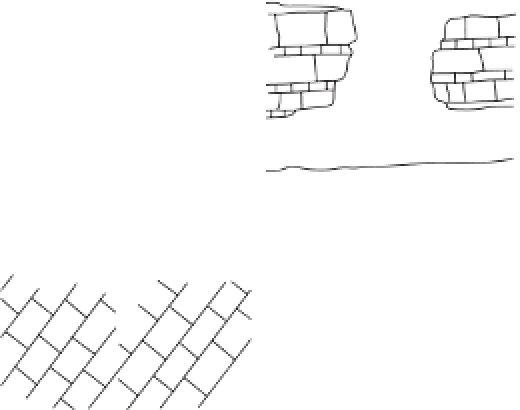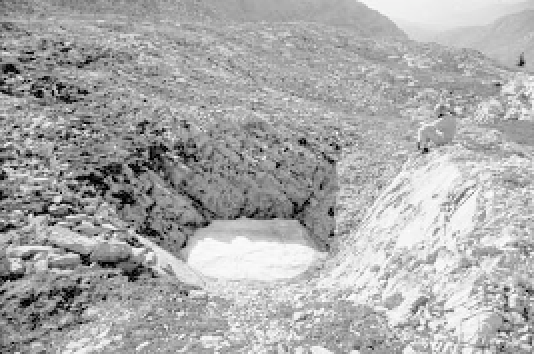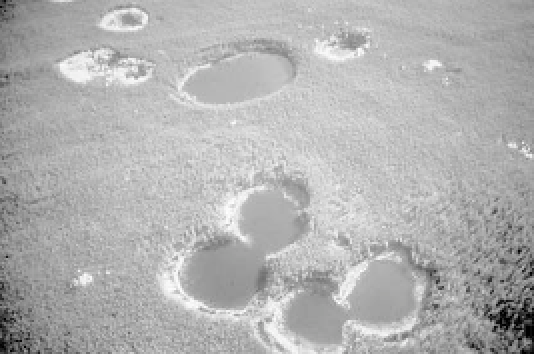Geology Reference
In-Depth Information
( ) Solution
()Collapse
a
b
( ) Suffossion
( ) Subsidence
c
d
Salt
Plate 8.10
Collapse dolines at the watertable, Wood
Buffalo National Park, Alberta, Canada. The dolines are
created by collapses through dolostone into underlying
gypsum. The diameters are 40-100 m.
(
Photograph from Parks Canada archives
)
Figure 8.7
The main genetic classes of doline. (a) Solution
doline. (b) Collapse doline. (c) Suffossion doline.
(d) Subsidence doline.
Source:
After Ford and Williams (1989, 398)
worn down and the bottom is filled with debris.
Eventually, they may be indistinguishable from other
dolines except by excavation. The largest open col-
lapse doline is Crveno Jezero ('Red Lake') in Croatia,
which is 421 m deep at its lowest rim and 518 m
deep at its highest rim. If the collapse occurs into a
water-filled cave, or if the water table has risen after
the collapse occurred, the collapse doline may con-
tain a lake, often deep, covering its floor. Such lakes
are called
cenotes
on the Yucatán Peninsula, Mexico,
and '
obruk
' lakes on the Turkish plateau. Some of
the cenotes near the Mayan ruins of the northern
Yucatán are very large. Dzitnup, at the Mayan ruins
of Chichén Itzá, is a vertical-walled sinkhole some
60 m wide and 39 m deep, half-filled with water.
Subjacent karst-collapse dolines
form even more
dramatically than collapse dolines when beds of an
overlying non-calcareous rock unit fall into a cave
in the underlying limestone. An example is the Big
Hole, near Braidwood, New South Wales, Australia.
Here, a 115-m-deep hole in Devonian quartz sand-
stone is assumed to have collapsed into underlying
Silurian limestone (Jennings 1967). As with collapse
dolines, subjacent karst-collapse dolines start life
as steep-walled and deep features but progressively
come to resemble other dolines.
Plate 8.9
Small doline in steeply dipping limestone in the
Rocky Mountain Front Ranges. The doline is formed on
a cirque floor in the valley of Ptolemy Creek, Crownest
Pass, Alberta, Canada.
(
Photograph by Derek C. Ford
)
2
Collapse dolines
are produced suddenly when
the roof of a cave formed by underground solu-
tion gives way and fractures or ruptures rock and
soil (Figure 8.7b; Plate 8.10). Initially, they have
steep walls, but, without further collapse, they
become cone-shaped or bowl-shaped as the sides are










